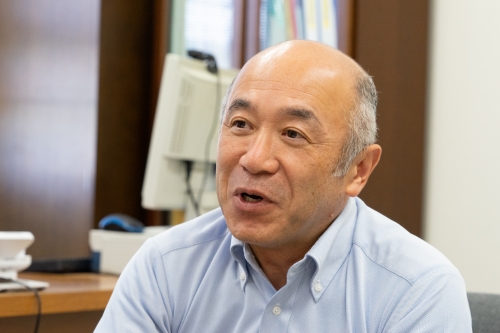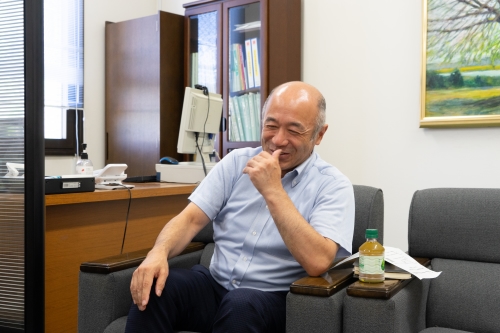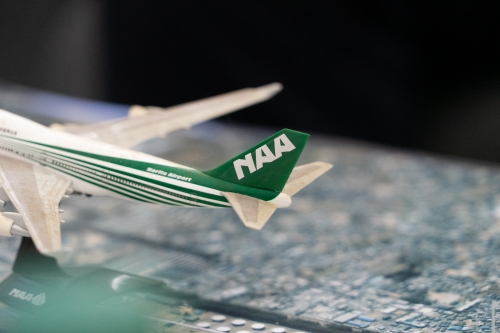When you say Narita, many people probably think of Naritasan Shinshoji Temple, but it is not the only thing to see. In Narita, there are many people who provide hospitality to visitors, and I would like you to know about them. Here, we will introduce them to you as “People of Narita”!
Our guest this time is Mr. Fumio Gunji, Director of the Museum of Aeronautical Sciences. He is involved in various activities as the director of Museum of Aeronautical Sciences located in Shibayama-machi, Sanbu-gun, Chiba Prefecture, which is adjacent to Narita Airport. We spoke with him in detail about his past and future activities.
ーIf you were to give a brief description of the Museum of Aeronautical Sciences, what would it be?ー

The Museum of Aeronautical Sciences was built in 1989 as Japan's first comprehensive aviation promotion facility, and will celebrate its 35th birthday on August 1 of this year.
The museum was opened for the purpose of promoting knowledge of aeronautical science and technology, especially for young people.
The reason why Shibayama-machi is home to Japan's first such facility is that in 1978, the year before the opening of Narita Airport, Shibayama-machi requested the establishment of such a museum, which is why it was built here.
ーPlease tell us about your own career to date.ー

I joined the New Tokyo International Airport Authority in 1987, and after a long and varied career, I was appointed to this position in July 2020, and as of the end of June, I have been the director of this facility for a full four years.
I am from Tako-machi, where the airport company is now expanding the land for the new airport enhancement. I was born and raised in Tako-machi.
Even in its current state, Tako-machi is partially the site of the airport, but with this enhancement, this airport will be greatly expanded toward Tako-machi, along with Shibayama-machi.
The Ken-O Expressway interchange will be built between Shibayama-machi and Tako-machi, and both towns were said to be on the back side of the airport, but when approaching the airport from the new Ken-O Expressway interchange, the area will be on the front side of the airport. I believe that we are living in an era in which this area will become the front gateway to the airport only after the construction and opening of Narita Airport.
ーWhat are your favorite spots in the area around the airport?ー
I like the picture of the paddy fields in the Kanto Plain overlooking the Pacific Ocean, and the airplane flying over them.
ーWhy do you like the view?ー

I didn't used to like it (laughs), and it was only when I got older that I began to like it. It was during the Showa period that I felt very frustrated when city people told me I was a country person.
As I get older, the natural beauty of my hometown starts to sink in. In Shibayama-machi and Tako-machi, you can see airplanes flying over the rice paddies, and when you see this Kujukuri Beach beyond them, you feel that you are spread out over the world. Airplanes fly in a puff of air and fly to the land beyond, and I wonder where they are flying to.
Everyone is connected to the world, and there is the ocean, which was the cradle of human life, and the earth and ears of rice that nurtured me are swaying. I feel that this is where I belong, or rather, that I was born and raised based on this place.
ーHow would you like our readers to enjoy the Narita Airport area?ー
For foreigners, the area where the museum is located has been designated as “Sky Park Shibayama” by the town as a tourist base, and a liaison council was established last year to develop and strengthen this area.
A dozen minutes by bus from the airport brings you here to experience Japanese nature, culture, food, and people. The approach to Naritasan Shinshoji Temple is also wonderful, but if you consider the airport as a starting point, an area where you can experience nature and Japaneseness is spread out closer than Shinshoji Temple. There is the Eco Agri Park, an environmental experience type park, and a waterfront village, where flowers bloom from season to season, and when you go to the sky station, you can find a variety of delicious goods, and the local people welcome people from outside the town with their hospitality. I believe that foreigners in particular will feel Japaneseness.
People in Japan can also have a very dynamic experience with airplanes taking off and landing up close, and at Eco Agri Park and Mizube-no-sato, you can walk through an area where airplanes really fly right overhead. Unlike Haneda, many different types of foreign airlines and many different types of aircraft fly in, so it is fun just to watch the planes.
We have local food, delicious vegetables, and a good view of the airport from our museum, so we decided to build an amusement area with easy access from the center of the city as “Sky Park Shibayama".

I have not yet reached a consensus at all, but I think the ultimate form would be something like the Cinderella Castle at Tokyo Disneyland as a Museum of Aeronautical Sciences, with various attractions around it.
The Ueno Forest is crowded with many foreign and Japanese tourists. There is the Ueno Forest with its greenery, museums, Shinobazuno Pond, and food shops. The area around the airport also has all of these elements, although the volume is not quite there yet.
I would be happy if we could create an area where the local community, the airport company, and business offices including the airline company can enjoy a taste of Japan together in this nature-rich area near the airport.



